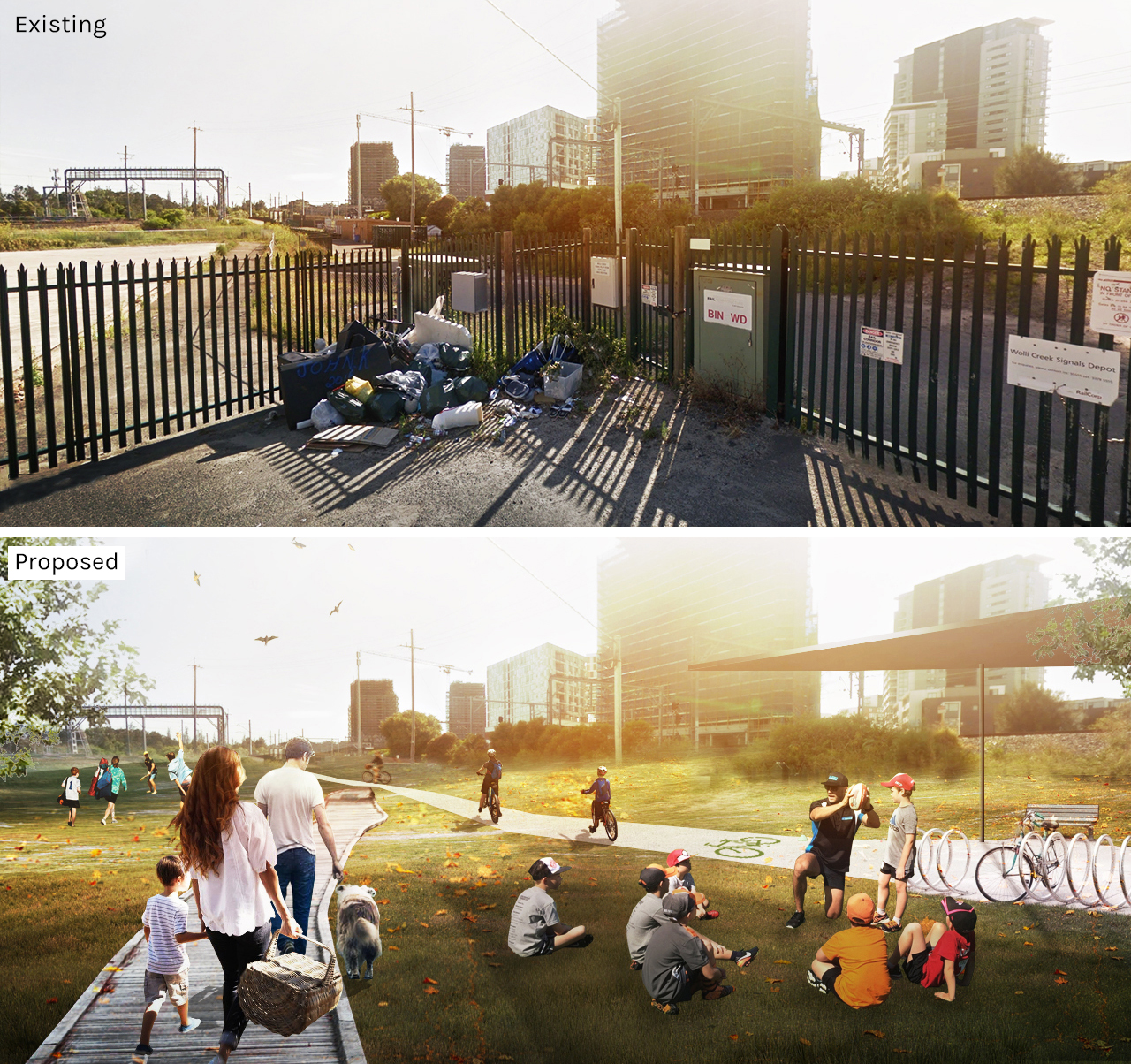MSD students shortlisted at Sydney Affordable Housing Challenge
A team of MSD students were shortlisted among working architects and international design students in the Sydney Affordable Housing Challenge.
By Derek Huynh, Raj Gandhi, Tony Yu and Ong Eik Ren
The Sydney Affordable Housing Challenge, an international competition, asked entrants to choose a theoretical site or collection of sites within Sydney. The brief was short: design a pilot-phase concept for affordable housing within Sydney, which can be easily rolled out to increase capacity of housing stock, and is minimal in its use of land and materials. The jury evaluated submissions proposed in the suburbs, and those inserted within the densest parts of the city.
Situated above train stations and in close walking proximity to amenities, The Green Line residents can save up to 70% of their travel expenses in comparison to a car-dependent household.
What motivated you to enter the Sydney Affordable Housing Challenge?
We thought it would be a great opportunity to tackle an issue which challenges many cities around the globe - something that our industry is partly responsible for and that affects millions.
Housing projects which focus on affordability often do so at the expense of other factors. For example, apartments on cheaper land away from the city often leave residents with two-hour work commutes - low livability. Alternately, developments which maximise the number of units produce a mass of south-facing apartments - low sustainability. By trying to minimise purchase price, these attempts increase household expenses such as travel costs and utilities bills, which over the long-term drive unaffordability.
Instead, we wanted to see if affordability, livability and sustainability could reinforce each other. For example, we placed our developments above rail stations saving residents up to 70% of their travel expenses while being a cheap source of public land. Our passively designed units greatly reduce water and energy consumption, lowering utilities bills. Our rent-to-own model removes the necessity for home savings while providing long-term ownership.
What were the positive benefits of the experience?
While most teams consisted of architecture students, we were uniquely a combination of architecture, construction and property students. And apart from learning an incredible amount from each other in a short time, it was also a rare chance for us to work autonomously without any supervision or guidance.
We were put in situations where we found construction ideas solving architectural issues or learning how architectural ideas could improve property concepts. Through this approach, we discovered a lot more about the broader industry, gaining an appreciation of how our disciplines might work together once we set foot outside of University.
What was unexpected about the experience?
Going into the competition, we didn’t realise how widespread and complex the housing affordability issue was - 1.2 billion people in the world currently don’t have safe or secure housing. In Sydney alone, the problem affects almost one in four people. Suddenly, the importance of each discipline became much more evident - we needed to find solutions beyond how the buildings functioned but also where they could best be placed (property), how they could best be built (construction) and how they could best connect with society (urban design).
How do you see this fitting in with your overall experience of study at university?
Our project was a critical culmination of our studies at the University. For example, our approaches to pre-fabrication built upon what we’ve learnt from our construction subjects, apartment design from ecologically sustainable design (ESD) classes and site selection from our urban design and property courses.
 Sydney has significant patches of land parallel to its ~900km of train lines. Our proposal transforms these underutilised spaces into networks of recreational, travel and green infrastructure.
Sydney has significant patches of land parallel to its ~900km of train lines. Our proposal transforms these underutilised spaces into networks of recreational, travel and green infrastructure.
 Our team (left to right): Derek Huynh (Master of Architecture), Tony Yu (Master of Architecture), Ong Eik Ren (Bachelor of Environments - Property) and Raj Gandhi (Master of Construction Management)
Our team (left to right): Derek Huynh (Master of Architecture), Tony Yu (Master of Architecture), Ong Eik Ren (Bachelor of Environments - Property) and Raj Gandhi (Master of Construction Management)
If you are a current student and have any questions about the experience of completing a design competition whilst being a student, Derek, Tony, Eik Ren and Raj welcome you get in touch with them via LinkedIn.